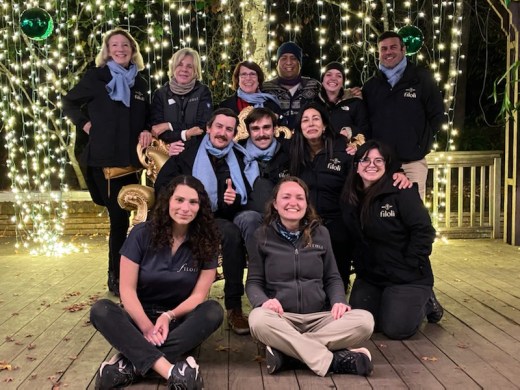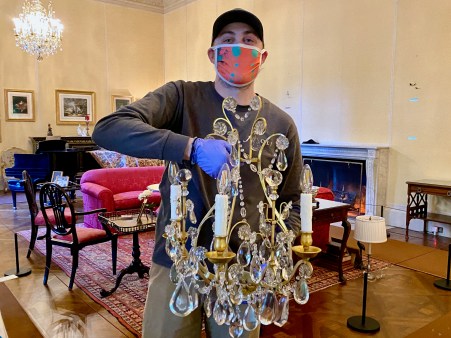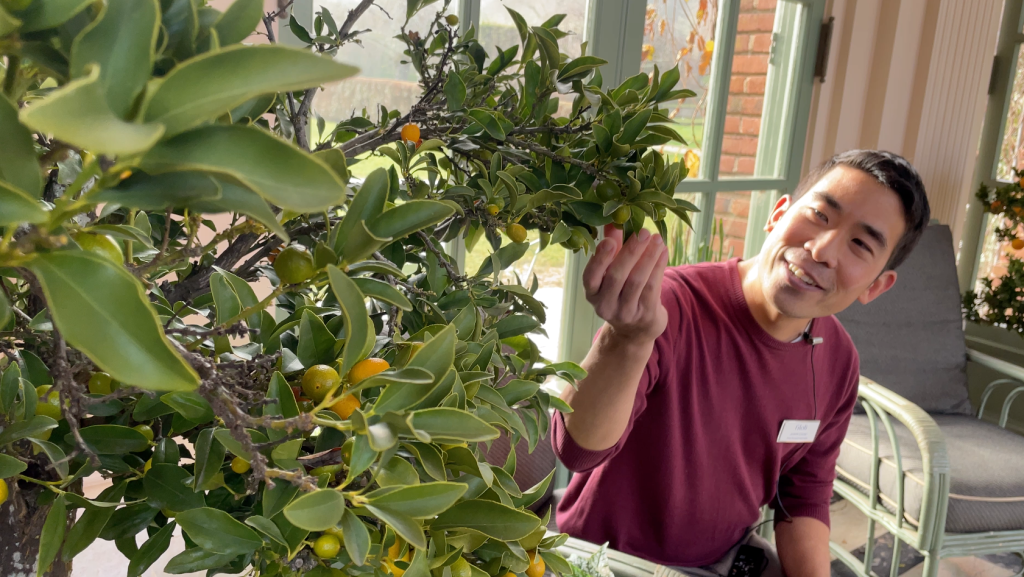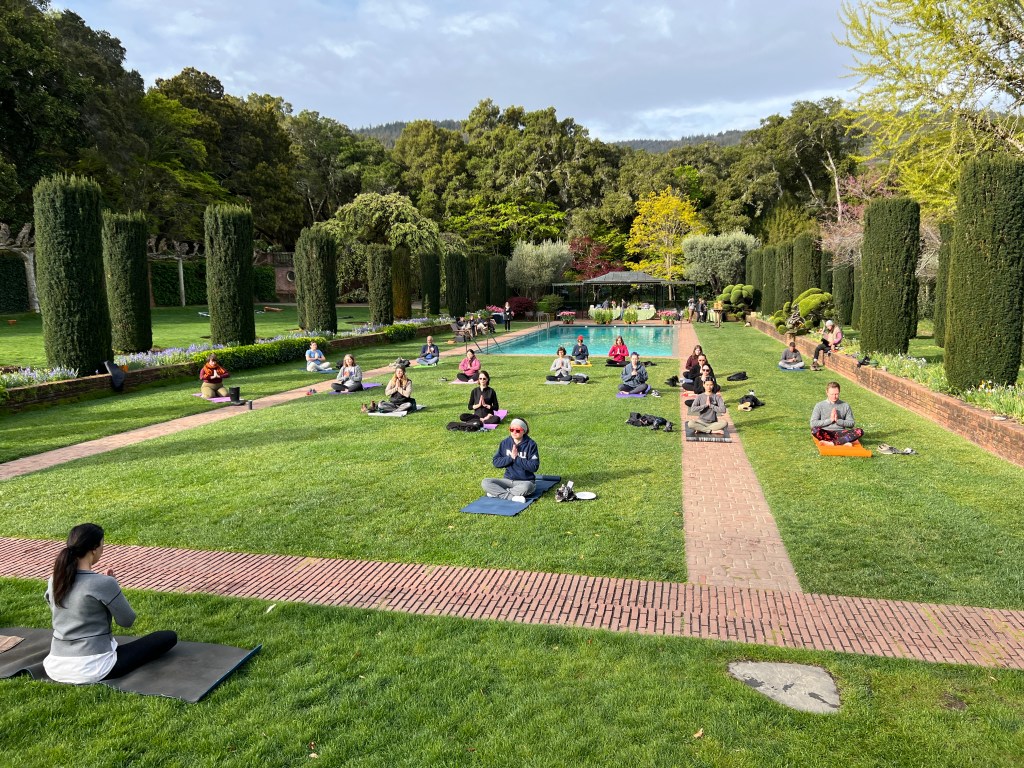
Each year CFM’s TrendsWatch brings attention to bear on critical issues for museums, challenging our sector to think about how we might adapt to a rapidly changing environment. Examining a future in which museums may create healthier metrics of success, this year’s report asks, “What if paying a living wage became the norm for American nonprofits (perhaps even a metric of excellence valued by donors and funders)?” In today’s guest post, Kara Newport, CEO of the historic house and garden Filoli, tells us how her organization is already meeting that potential future head-on.
—Elizabeth Merritt, VP Strategic Foresight and Founding Director, Center for the Future of Museums, American Alliance of Museums
As a lifetime nonprofit professional, I long accepted the tropes associated with the field:
“Everyone here has a passion for the work.”
“The return we get is seeing the joy on the children’s faces.”
Or, my favorite, “As a nonprofit, we are able to offer great benefits.”
I learned early in my career that all these phrases meant the organization didn’t plan to pay us more than our low salaries, that they hoped we had other means of supporting ourselves, and that if we needed an afternoon off, they would give it to us, but we had to work the weekend to make up for it. When leadership talked about investing in the organization, they typically meant something other than investing in staff. Still, we worked hard, accepting that we would likely be underpaid and undervalued because the organization’s mission aligned with our own values.
Even when I became the leader of a nonprofit myself, I found it difficult not to perpetuate this mindset. While I tried to push the boundaries by creating as flexible a work environment as possible, that flexibility was still balanced with an expectation of the long days and evening and weekend shifts required by many cultural organizations. To make ends meet at my small but mighty organization, I often sought people who only wanted part-time work and didn’t need benefits, so I could pay them a higher hourly rate. In effect, this meant expecting they had supporting spouses or other means to sustain themselves, but even as a leader, I felt I had little choice. The organization was struggling, and there was no community or board support to pay people fairly. My only way of contributing was to sacrifice myself, so I went seven years as an executive director without a salary increase.
Then, in 2016, I moved to the Bay Area to become CEO of the historic house and garden Filoli. Following many years of leadership turnover, the organization was ready to move into a new phase of development, which became an opportunity to finally challenge some of these inequitable practices in the field. After several years of groundwork, we’ve recently embarked on a pay equity initiative built on the premise that investing in our staff is equivalent to investing in the organization.
Setting the Stage
Our initiative was the result of several years of steps which aligned our perspectives and priorities as an organization. First, immediately after I arrived at Filoli, the board tackled ambiguities in its own governance by updating the bylaws; creating clarity around board, staff, and volunteer roles and hierarchy; and reviewing and refining our agreements with the National Trust for Historic Preservation (the trust is the property owner and Filoli is a 501(c)(3) organization that leases and independently operates the site).
Then, in 2018, the board launched a comprehensive strategic planning initiative with an outside facilitator, Stevenson Wallace, to establish a clear path forward. In addition to a modernized mission and vision, the planning team established core principles centered on diversity and inclusion, and a core goal category of “people and culture,” with the priority to “attract and retain a talented team.”
Based on these plans, we then launched several simultaneous actions, including an assessment of our volunteer program (also led by Stevenson Wallace); the creation of a diversity, equity, accessibility, and inclusion plan led by a task force of board, staff, and community members; and our first-ever application for AAM Accreditation. These steps created a common and aligned organizational perspective that centered around the value of people—a concept that became increasingly important as we began to set out building a viable and sustainable organization.
Within the goal of “attracting and retaining a talented team,” Filoli sought to implement the known best practices for human resources with an emphasis on diversity and inclusion. We redrafted all job descriptions to ensure inclusive language and reduce arbitrary barriers, began posting salaries with positions, and reviewed our compensation structure for internal equity. The human resources committee of the board also took a deeper look at benefits, adding to our existing 401(k) match and vacation time off new additions like a sabbatical program and education reimbursement.
As productive as these efforts were, though, they were not enough to compete with the Bay Area’s rising cost of living and high competition and cost for housing. In 2019, our turnover peaked at 50 percent. Then, as the pandemic took center stage in 2020, we were forced to reduce our staff by 20 percent. While our reductions were somewhat balanced across staff levels, this was not true of the broader sector, where pandemic-related layoffs and furloughs disproportionately impacted entry-level employees, who tended to be more diverse than those whose jobs were spared. As the country’s racial justice crisis reached a breaking point that summer, the disparity in museums became even more apparent.
Looking at our own retention issues, these increasingly glaring disparities across the field, and the information we had been collecting in our studies of best practices, we began to form a new perspective: It is not possible to have true equity without pay equity.
A Living Wage
As Filoli emerged from the pandemic, we started to move forward with the human resources plan we had developed in the years before, the next step of which was completing a compensation analysis. We originally planned to complete this in house by comparing our positions and salaries to available regional studies like the Northern California Nonprofit Compensation Survey, along with national industry resources including both museum and public garden studies. Then, after a meeting of the board’s human resources committee, our Board Treasurer Bob Nibbi called and asked me a question about our process: “If you are only benchmarking with like organizations, aren’t you tacitly agreeing to underpay your staff?” This question provided an opening that changed our trajectory.
Instead of benchmarking our salaries, we began to look into the concept of a “living wage,” which other corporations in the Bay Area had been talking about for some time. The living wage, according to Dr. Amy K. Glasmeier, an MIT professor who created a living wage calculator for the United States, is a “market-based approach that draws upon geographically specific expenditure data related to a family’s likely minimum food, childcare, health insurance, housing, transportation, and other basic necessities (e.g. clothing, personal care items, etc.) costs.” This figure can be dramatically different from state and federal minimum wages, not only in expensive regions like the Bay Area, but across the country. While federal minimum wage has remained at $7.25 an hour since 2009, national living wage averages by state were between $21.25 and $29.80 in 2021. For a single person in San Mateo County, California, where Filoli is located, the living wage was $28 per hour that year.
The current challenges in attracting and retaining employees stem not just from these high costs of living, but from a competitive labor market that has increased the threshold for salaries. ThinkImpact reports that new graduates are making $52,000 (with a communications degree) to $56,000 (with a humanities degree). If that is the national average for new graduates with limited experience, museum leaders must ask ourselves, how much should we be paying our curators, interpreters, and marketing experts?

As seriously as we began to take the data on living wages, it was admittedly challenging to see how we could implement an increase in overall salaries at this level as a nonprofit. Then a colleague who had heard my aspirations to implement a living wage shared a tweet from the renowned economist Robert Reich, who stated, “This is not complicated. If you can’t afford to pay your employees a living wage, you do not have a viable business model.” As nonprofit leaders, we often lose sight of the fact that we are running a business and have the same obligations as any business to run a viable financial model. We have two responsibilities: to deliver our mission and to support the people who we lean on to deliver that mission. This strengthened my resolve to find a way.

Pay Equity Plan
The challenge before us at Filoli was now clear: We aspired to “attract and retain a talented team,” to be a place where people wanted to work and could develop a career, but to do so, we needed to pay a living wage, not just one considered competitive in our field. So, in 2021 we developed a simple compensation plan: establish the living wage as the base pay for all positions and then build on that platform based on title and experience (we had previously placed all staff in title categories). This change in our starting wage would impact 46 percent of Filoli staff, leading to an estimated $750,000 increase to our operating budget of just over $9 million.
Filoli has a very small endowment and earns 94 percent of its revenue, so this was a significant undertaking. But what we found, as we did more research, was that avoiding an increase in salaries would likely end up costing us anyway, in the long run. The Society for Human Resource Management has estimated that companies spend approximately forty-two days and $4,129 per hire. Applied to Filoli’s dramatic 2019 turnover rate of 50 percent, or twenty-nine employees, this direct cost would have been about $120,000 and 1,218 lost business days. Knowing this, and that our goals to diversify our team and achieve equity would be impossible without pay equity, we sharpened our pencils and found a way.
To support the immediate and permanent 6 percent increase to Filoli’s operating budget, we looked to earned revenue. Already, the museum earned 88 percent of its annual budget, and we sought to identify potential in our known revenue streams to earn more. Filoli had a robust rental events program, for instance, but we knew from benchmarking that it could still increase, so we assessed pricing and looked at new audience opportunities. Additionally, we evaluated our pricing for admissions and membership and implemented phased increases for both programs. A new area we established was a group tour program. While Filoli had a modest level of group attendance, we did not have a concerted effort behind it, so we created a program structure, deepened our partnerships with our regional convention and business bureaus, invested in memberships like the American Bus Association, and created a position for a dedicated Group Tour Coordinator. Our most significant opportunity was around exhibitions and programs. We expanded our already popular Summer Nights and Holidays at Filoli event by increasing capacity through timed tickets and expanding our open hours. All of these plans were supported by increasing our investment in marketing to support modest but targeted efforts around each planned investment.
Our goals were lofty, but our organizational capacity for incremental growth and our proven track record in earned revenue supported our confidence in the plan. Most importantly, we knew these aggressive plans were necessary to live into our values.
The Results

The plan was first presented to the board in June 2021 and was fully executed by September 2021. Even having lived it, this seems extraordinary, and many have asked how it was possible. The answer is that we had alignment. The investments Filoli made in establishing best practices in board governance and undertaking a professional strategic planning process in 2018 set the stage for a commitment to the goals we established. The board recognized that they had made a commitment to “attracting and retaining a talented team” and to ensuring inclusion and diversity across the organization. They were compelled to take action that was transformative not just for Filoli, but for our field as a whole.
In 2021, the board approved a Compensation Philosophy document that provides a transparent framework for employee compensation aligned with the strategic mission. This philosophy is designed to ensure all of our compensation decisions are fair, equitable, competitive, transparent, and consistent with our values. It includes a framework for base pay, tiered position ranges, pay equity, bonuses, market comparisons, transparency, and benefits.
This year, we completed a professional market comparison using CompTeam, which reaffirmed that our commitment to a living wage was aligned with our regional and national markets and provided more information on professional positions which will lead to further compensation adjustments this year. The study results allow us to be fully transparent on salary ranges for each position and develop plans for staff professional development to advance within their tier. We have received the 2022 living wage calculation for our area, and it is up from $28 to $30.81 an hour, which we will be matching in our compensation plan.
Already, we have experienced a difference in our staff since implementing the plan. Our turnover rate has gone from 50 percent in 2019 to 8 percent this year. The returns on investing in our staff and creating a culture that values its teams have been greater retention, higher productivity, and a happier workforce buying further into the mission and strategic goals. In a highly competitive market, we have many qualified applicants for each of our open positions, and our team is more diverse than ever.
In the times of the Great Resignation, rising inflation, and the threat of a recession, we must consider the key role our employees play not only in delivering our mission but in serving as ambassadors for our organizations. As Kathy King, Public Programs Coordinator at Filoli, said, “Filoli’s Living Wage Initiative told me everything I needed to know about Filoli as an organization, where it stands within this industry, and whether this is an industry I’d actually want to (and fiscally be able to) start my new career.”










“It is not possible to have true equity without pay equity.” Can we get this on a t-shirt? This is the dirty secret of non-profits/museums: the people at the top are there because they had the independent means necessary to stick it out. People who do not come from family wealth cannot afford to stay in the field. All the initiatives to create a diverse workforce mean nothing if payscales are not adjusted. You will just have those people of color who don’t have independent means leaving a few years in because the pay is not liveable. In some cases, this may be because the full payscale is depressed, top to bottom. But I see way too many examples of non-profit 990s with CEOs makeing $300k when I know they hired new staff at $35k per year. This happens in academia, too. The situation described in this recent article in Chronicle of Higher Education is another instance of, in essence, a starting salary that is unlivable: https://mail.google.com/mail/u/1/#search/chronicle+of+higher/FMfcgzGqPzPDkWHKzxhxWcBzjKKLKSfj
Spot on, Lisa! Lack of sustainable and equitable pay pushes in exactly the opposite direction of the DEAI initiatives that are increasingly front and center in our museums. Diversity/inclusion cannot effectively be addressed without addressing pay. These are often seen as separate issues, and while they are not the same issue, they’re inseparably joined at the hip. Thanks for pointing this out.
As a long-time advocate for sustainable careers in the museum field, this is one of the more encouraging things I’ve read from the museum sector in years. It’s important to note that in order for Filoli to implement these positive changes, leadership – at both the executive and board level – had to prioritize these goals. They had to be brave enough to ask the difficult questions and face some hard truths, own those truths, and commit to change. Bravo!
I’m interested to know more about how Filoli development staff approached financial supporters about this. It’s a “known truth” in museums (and nonprofits in general) that “donors don’t like to pay for salaries and operations” and that they prefer to invest in more visible things that they can put their name on. I’ve often speculated on whether or not this truth is in part of our own making, or at least self-perpetuated.
A discussion with a nonprofit development professional a couple of years ago suggested that this truth might be changing. She was finding that unlike “old money” donors who want to support the symphony and aren’t that concerned about the internal workings as long as the concerts still happen, many younger donors today are also interested in learning whether or not their dollars will align with their own ethics/values. Before they write the check, they want to know about the organization’s behavior and policies on diversity, LGBTQ issues, environmental issues, etc. It seems like part of that discussion would have to include the question “does everyone working for your organization earn a sustainable wage?” My hope is that rather than this subject being something that is avoided, it will become a point of pride for organizations who take the lead and invest in their staff.